Abstract/ Executive Summary
In this present IT era, E-procurement in business is essential to enabling us for an active live as an integral part of e-commerce and e-supply chain. To be a welfare state, government is extremely loyal to achieving e-procurement as a part of e-governess. However, nowadays e-procurement in business is the commonest feature of corporate houses and the modern business has seriously driven to achieving it. It specialist of corporate houses are seriously involved to updating the e-procurement process. Proper e-procurement could enhance the revenue of a firm reducing cost and time for procurement process as well as maintaining quality assurance rather than traditional procurement.
This present dissertation “Implementation of E-procurement in business: A study of Finnforest Corporation for e-procurement performance, traditional procurement and their relationship” aimed to investigate the implications of implementing opportunistic E-procurement in business and draw conclusions, which will support the development of a business plan and the proposal for the implementation of opportunistic e-procurement. With this vision, the author has undertaken a review of the literatures regarding e-procurement in business and branded a few clear areas of consideration in this concern. A clear justification has provided for implementing e-procurement in business and worked out a logical business case of Finnforest Corporation.
The aim of this dissertation is to explore the implications of implementing e-procurement in business and develop a business case to compare and contrast the relation of e-procurement and traditional procurement and their relationships. As part of author’s role as a IT specialist/ Advanced Management Practitioner in marketing, the author is responsible for exploring and developing new ways of working to ensure the e-procurement in business remains market focused and in doing so addresses the needs of the e- supply chain management in this regards.
The qualitative and quantitative approach has experienced on e-procurement with three standard rudiments have incorporated for qualitative approach like, assessment of traditional procurement and post e-procurement for the Finnforest Corporation with theoretical sampling, supplier’s narratives for the e-procurement and the views and experience of the purchase managers and staffs of Finnforest Corporation. Quantitative constituent includes the study of supply chain management has incorporated here with the context of the procurement service delivery reflecting on the process of e-procurement implementation of Finnforest Corporation.
Introduction
This dissertation would explain the implementation of e-procurement in business and development of Finnforest Corporation with a detailed analysis of the e-procurement performance based on its current position and traditional procurement. This dissertation would be well thought-out in six major sections and these are as follows-
- Problem Statement: The first chapter of this dissertation would describe the background of the topic, underlying principle for the research with theoretical framework of e-procurement. This chapter also keeps its effort to raising the research question and given explanation of the objectives, scopes, and limitations of this research with an overview of Finnforest Corporation.
- Literature Review: The second cheaper would be organised with the relevant theoretical discussion on e-procurement supported with modern authors and noteworthy researchers. This cheaper would present the introduction to e-procurement, its process technology, infrastructure, e-procurement efficiency, e-procurement quality (EPQ) measurement scale, and dilemmas of e-procurement with a comparison as well as the relationship with traditional procurement. The empirical evidences has presented from the performance of Finnforest Corporation.
- Methodology: The third chapter makes it available that the justification on how the current research on e-procurement would be conducted. It also explains the process of relevant data collection and conducted interview process, inadequacy of the process as well as limitation on data collection and consequence of primary and secondary research as well.
- Result & Findings: The fourth segment of the dissertation would enlighten on the collected data and explain the outcomes of the conducted research as well as finds out suitable level of e-procurement for Finnforest Corporation.
- Discussion: The fifth section of the dissertation would pore over the methodological hypothetic and summaries the accomplishment of existing e-procurement instead of traditional procurement of Finnforest Corporation.
- Conclusions: The sixth chapter of this dissertation would concentrate to point out the key recommendations and assemble the result in order to get in touch with a conclusion.
Background of the problem
Ghiya & Powers (2005, p. 6) defined e-procurement as to buying goods and services those are directly or indirectly utilised for the production of a firms marketable goods by means of the Information technology as well as web platform. The e-procurement has kept its enthusiastic spotlight on the global supply chain with central attention to the IT tools, people, as well as processes. The e-procurement has seriously reduced the expenditure for procurement with a noteworthy impact on the supply-chain management as well as the bottom-line profitability of a manufacturer. Taking the particular global ERP1 system as a basis the e-procurement has draw attention on quite a lot of groundbreaking resolutions. There should be available e-Catalogs those particularly connect to the supply base directly with out any extra effort just by a click and endow with efficiencies from end to end transactions as well contract compliance. An improved data model would be introduced to giving feasibility of global expenditure by country, supplier, and goods. For negotiation efficiencies, the tools of the IT2 have been used for finding the middle ground and to attaining further cost effectiveness where the suppliers take part in on-line turn around negotiations through the Internet to be triumphant of the said business (Cohen and Roussel 2005, pp. 1-3).
The traditional procurement has variety of ways to meet its buying needs. Under the traditional procurement process, the purchase order delays seriously hampers the internal customers needs, unpredictably increase of purchase spending and limited aggregation to standardising the overall purchase systems. To address these gaps, this dissertation has initiated a widespread evolution arrangement aimed to unifying the accomplishment of e-procurement in business and generating an outstanding procurement solution with affiliation of traditional procurement. This dissertation would also support to the technological progressions equipped to make stronger the supply chain management with empirical evidences from Finnforest Corporation.
Rationale for the Research
Norton, et al (2001, p. 15) reported that Finnforest Corporation UK is the pioneer of forest product manufacturer under the Metsäliitto Group Finland. Being the largest player of European timber market with a wider customer base the company has struggled to achieve desired profit. From 1995, Finnforest Corporation reported a loose of US $ 100 million rather than making any profit up to 2001 for six years. In 2001, the company has integrated e-procurement as part of its e-commerce incorporation and tools of balanced scorecard that has generated a profit of US$ 20 million rather than US$ 20 million loose per annum in context of previous six years.
Semenov (2007, p. 98) pointed out that the forest industry is one of the ancient and most traditional industries through out the globe, which generates near about $750 billion of gross revenue in worldwide marketplace and jumped to integrate e-procurement as part of their e-commerce. The forest product traders and manufacturers have already started to make use of the Information Technology to ascertain enhanced business relationships with their suppliers, customers, as well as wider presence in the marketplace. Semenov (2007, p. 107) quoted that only a 14.3% of the exporters of forest industry have integrated information technology. Among them 60% has web presence with static webpage and use IT as a communication tools. Rest of them has promoted themselves for B2B marketplaces and used marketing tools and e-commerce as well e-procurement.
Norton et al (2001, p. 13) mentioned that the company Finnforest was much more aware its traditional procurement structured supply chain model, manufacturing and distributing attention to its DIY3 to the internal and external outlets. Excessive attention to serving DIY customers, three shifts running production, and inefficient IT system has seriously hampered the profitability of the company and turned it to a mysterious loosing concern. As a forest product manufacturing company, Finnforest has traditionally focused on its procurement resources to optimising procurement practices in DIY market rather then e-procurement until 2001. Nevertheless, from the later year Finnforest derived to its continuous profit making.
Chapman et al (2003, pp. 8-16) argued that Finnforest has launched its e-procurement aimed to strengthening the supply chain of its forest product. The prime focus of this initiative was information technology enrichments and addition to improving the business processes, online payment system, and HR skill sets, reducing the procurement costs and lead-time saving of traditional procurement.
Thus, it is rational for this research to outlines the implementation of e-procurement in business, its challenges, developments, and outcomes of the e-Procurement program instead of traditional procurement and their inter-relation that has transformed the Finnforest Corporation to turn itself into an outstanding supply-chain benchmark company.
Research Question and Objectives
This dissertation has been anticipated to response the following research questions those would support the dissertation topic. The prime objective of this dissertation is to analyse the development of e-procurement in business, and find out the relationship between e-procurement and traditional procurement as well, and how e-procurement has influenced the development of Finnforest Corporation. Here four research questions have been raised for this research and these are –
- How e-procurement technology, process flow, and efficiency redesign the role of management exists in traditional procurement?
- What e-procurement quality (EPQ) measurement scale would be appropriate for Finnforest Corporation to face the challenges to e-procurement implementation?
- To what degree the implementations of e-procurement could be success it is in measures of Buyer’s Power and return on Investment.
- What extents do Finnforest Corporation has assessed the relationship of e-procurement and traditional procurement in context of competitive advantage?
Scope and Limitations of the Study
The main objectives of this research are to evaluate the Implementation of e-procurement in business of Finnforest Corporation and recommend a new and unified procurement plan to sustain with the competitive advantage and accomplish the profitability in comparison with traditional procurement. As part of author’s responsibility as a Management professional , the author is accountable for exploring and rising new ways of working to ensure e-procurement in business to considering the ROI4 adding focus to the Finnforest Corporation and in doing so addresses the needs of procurement managers and shareholders.
The excellence of this research has been varied noticeably in different stage. A number of qualitative studies have occupied a miniature figure of participants as well as the assortment was not random (Christianson et al 200, p. 21). For illustration, a single cross sectional study interrogates with only three managers of Finnforest Corporation UK. Due to look upon to the poor number of managers, in favor of logistical constraints, just there is a sampling interviewer has been taken on to settle the research data. The data pull together from the broad-spectrum survey has been collected over time from an inadequate illustration of respondents. Thus, the scope of the research questions listening carefully was also very so often limited.
On the further look, in spite of the volatility all studies have demonstrated comparable findings. It is noteworthy that all the findings sustain with each other robustly irrespective if the studies were carried out by means of qualitative or quantitative disclosers. The unstructured makeup of the open-ended assessment questions and consequential free-form responsibility initiates the prospect for misapprehension of the answers as well as generates the chance of excessively broad assemblage of the responses among the similar factor categories. The outcomes have been pooled into customary factors as shrine in the Findings section.
Moreover, the given deadline is also another limitation for this study. A larger response rate from the managerial survey of Finnforest Corporation would have advantageous, reasoning more methodical and random sampling understanding has been assigned to the work force surveys. Even so, from the reliable spirit of the results, this researcher may confused that a more sophisticated sampling plan or more comprehensive research design would escort to very much diverse conclusions.
Literature review
Introduction to E-procurement
Concerning the required topic implementation of e-procurement in business the paper has studied earnestly overall theoretical discussion on e-procurement and assumptions of the Finnforest Corporation in the area of e-procurement aspects. Early of the theoretical discussion, a brief preface of the e-procurement is outlined bellow and before that its considerably pointed- e-procurement is a part of supply chain management executed through online or by the Internet. (Tech Target 2009, pp. 13-118)
Dai, et al (2000, pp. 3-25) described that e-procurement or the electronic procurement is typically termed as supplier exchange that has to consider business model type- business-to-business (B2B), business-to-government (B2G) or business-to-customer (B2C) while purchase and sale would be conducted. Baily (2008, p. 119) added that not only supply of purchase and sale, administrative work and services are also executed through the Internet. Some of those tasks are- resource planning of the firm, exchange of electronic data, information and networking system of the enterprise etc.5
Moon (2002, p. 7) added that Pre-requirement of the e-procurement is registration of then qualified users who enable to buy and sell of goods and services. Cost of this exchange either fixed or require bid in order to terminate the exchange. For the qualified and regular customer supplier frequently offers some special like- cost discount at large volumes, offer greater quantity at lower price or prior price. Harder & Humphrey (2007, p. 9) said that accomplishment of the e-procurement requires automate software featured with- faster, agile, comprehensive and sustainable factors. Rather than traditional procurement process-manufacturing cycle of the e-procurement is much improved, holds greater efficiency as well as reduction of the purchasing agent overhead. In shorter form, e-procurement is the online supply chain management that integrated purchase-to-pay (P2P) value chain approach in a wider form.
Cresswell, et al (2006, pp. 7-10) recommended that both supplier management and complex auction would be involved in the software of the e-procurement. Today’s generation considers e-procurement software as a service. Types of the e-procurement is basically seven described as follow-
- Web-based ERP (Enterprise Resource planning): grounded on the Internet technology, purchasing requisitions are created and approved as well as purchase and receive of orders, goods, and services.
- E-MRO (Maintenance, Repair, and Overhaul): non-product related goods and services are supplied by the MRO and the difference between the web-based ERP and MRO is the first one deal with products, goods and services where as the second one supply only non-product goods and services.
- E-sourcing: regarding to complete non-familiar types of purchasing demand through this site enquire new suppliers.
- E-tendering: gather the responses of the suppliers against their required information and prices of the products, goods and services online tendering is executed by the e-tendering.
- E-reverse auctioning: In this case, suppliers would be both known and unknown and in this online service provide available sources to buy gods and services.
- E-informing: both of the external and internal parties utilise this online opportunity and therefore they get conditions of purchasing goods and services.
- E-market sites: Due to expansion of Web-based ERP value chain is much easier during this generation. Available information both of the parties- buyer and supplier involve in upgraded shopping chart, requisition creation, provide approval, receive both of the purchase orders and the process invoices at online and the forces describe the supply chain of the supplier as well as financial properties of the buyer. (Stevenson, W. J., 2006, pp. 67- 84)
Maier (2009, p.9 ) argued that factors of the e-procurement value chain are- indent management, e-tendering, vendor management, e-auctioning, contract management and catalogue management. During the preparation of the tenders, workflows are executed by the indent management. Indenting process is optional part of the value chain approach and condition of this segment is termed by the individual procuring department. In practice, electronic format is compulsory for the technical sanction and administrative approval. In case of goods procurement, indent generation is conducted only through online and in the stage of post result NIT is the issue that taken as inputs.
Elements of E-procurement
Goldberg (2008, pp. 1-3) stated the elements of the e-procurement has involved-
- Information request
- Require proposal
- Quotation request
- An aggregate form of information, proposal and quotation termed as- RFx
- And finally, RFx project software for management defined as- eRFx
Mukhtar, et al (2009, p. 8) stated that regarding to move forward the supply chain management the e-procurement has brought several benefits. For instance, by creating an agreement between customer and the supplier that could be termed as vendor. Tasks of the vendor are to serve the real time information along with the automation of the shipment of the materials as per customers’ demand and always attached with the customer to provide best service as possible.
According to EPIQ (2008, p. 2) following are the forces in those areas e-procurement has also enlarge helping hand as well as make the required duties easier-
- Prompt the decision making process
- Keep relevant, organised and adequate information those express the company properly without making any time wastage such as- product number, contact point and the bid prices
- Make the transactions easier and standardize promptly
- Regarding to achieve smart pricing approach, leverage the knowledge of both of the suppliers and the customer
- Keep all bids in a proper track
- Seek the most profitable trading partners as well as the contracts
- Keep the inventory levels in a sound manner
- Make available a multiple access level that allows managers be a administrative user through utilise- roles, groups or tasks
- All of these systems are not require high costs and more time to learn
Typical adoption strategies
EPIQ (2008, p. 3) also pointed out that strategies are the tools or approaches to attain desired goals or objectives. Strategies of the e-procurement require discover through all the transactions conducted by the suppliers and the content management as well as the problem arises in this area. Adoption strategies by the companies may be held in two ways-
- First, a sequential adoption of the strategies
- Second, complete diversification of the business track utilising a parallel way
However, both of these approaches have made some faults but in longer future, those brought greater profit for the company.
According to Smeltzer & Carter (2001, p. 7), following are the steps of e-procurement strategy adoption-
- Analysis of the company supply strategy whether it place at sound or not
- Analysis and segment the areas of spending
- Assessment of the infrastructure
- Integrate the preferred options that gathered after the above analysis
EPIQ (2008, p. 2) also added that in following case, companies should not allow strategy adoption for future safety and security-
- Don’t over stock the inventories
- If the time and resources don’t support parallel system then better to avoid this and attach towards the incremental approach
- Avoid the immediate return on investment (ROI) and focus on long term and larger ROI.
E-procurement Technology/ Infrastructure
Kerr (2009, para 8) argued that before 1990s all of the purchasing process and supply management tasks were accomplished through papers due to absent of software for purchasing. Today’s competitive markets do not know what is waiting for them tomorrow and what would be the customers test. Another issue is to turn toward the IT infrastructure is the recent economic recession and match the appropriate innovative step with the consumers demand. In case of supply chain management (SCM) and e-procurement technology or infrastructure, require appropriate strategy regarding to install them such as- cloud computing, pay-per-use, Software-as-a-service (SaaS) etc. for the efficient procurement strategic technologies in 2009, 10 strategies are chosen by a research for their inherent elasticity and scalability. This research has also evaluated that yearly 7 % expansion has executed through e-procurement technologies have demonstrated in the following figure.6
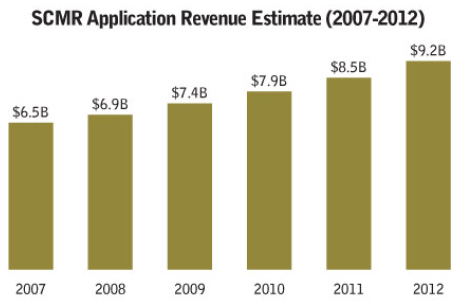
Kerr (2009, para 9) stated that supply chain management and e-procurement is a part of global trade and effective tools for them is- sales, operating planning and managing associated services. Tools of balancing demand, supply, and global trade networks optimization execution is plotted in the following circle followed by an account of those steps.

- Sales and operations planning: SAP UK (2008, p. 2) stated that this segment is composed of- finance, operations, marketing and sales associated with a long lead-time. Technology categories of this portion entire SAP, Oracle, and ERP (Enterprise Resource Planning) vendor.
- Global trade management: overall efficient of the supply chain rely on a sound cost system. Appropriate technology- vendor has to seek for trade management software as well right credit card and contract terms.
- Supply chain (SC) performance management: custom clearance speed, effective lead-time costs, level of logistics service etc. vendors are utilised here analysis and business reporting.
- Demand planning: SAP, UK (2008) stated that demand planning as well as utilisation of SAP, Oracle demand forecasting is also assessed by recent- Manugistics, Kinaxis and i2.
- Inventory optimizing: Within a short time supply, chain strategies are sketched by multi-echelon inventory optimization tools that make this step easier.
- Production and distribution planning: Maier (2009) argued that most effective production and planning distribution software are SAP, Oracle- i2 and Infor vendors, which have executed distribution tools and analysis functions of the production.
- Transportation management: in case of transportation, SaaS is the most effective approach that capable to reduce transportation costs and increase revenue of the enterprises up to 5 % annually.
- E-procurement: software solution of the e-procurement or the online procurement is e-mail. Cash collection, supply, and distribution of the gods and services, contract terms etc. are the job of e-procurement. Shifts towards technology has influence supply chain through two manners-
First, analytics with everything that entire- spending analysis, business intelligence, contract duration, lower production costs as well as market and labor and fundamental business challenges and dilemmas.
Second, reaching for the IT faucet deals with transportation management system (TMS) and conflict around the network and the desired software for these is “SaaS” shown in following figure:
Procurement technologies forecast
/var/www/blog-sandbox.itp/wp-content/uploads/2021/10/200724_3.jpg 420×411 24bit N Adobe JFIF [OK] 31451 –> 31424 bytes (0.09%), optimized.
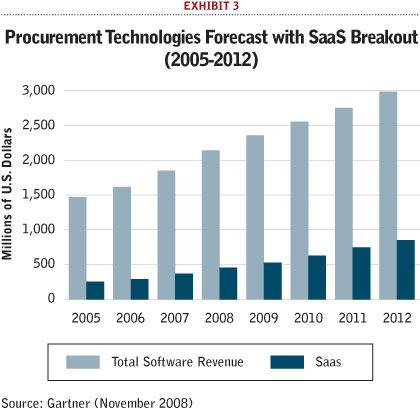
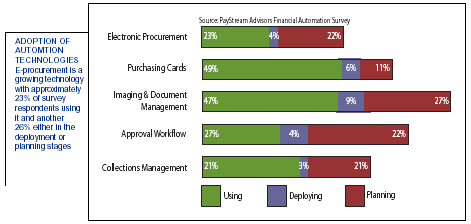
E-procurement Process Flow
Pay Stream Advisors (2007, pp. 2-13) reported that regarding to electronic supply and online purchase order deliver, e-procurement process has attach itself with vendor catalogs, creation of requisition, for the processing approval utilisation of workflow tools featured with sophistication. A massive knowledge of the e-procurement process would reach the procurement professionals capable to vendor appraisal as well as technological improvement of the organisation. Fundamental Steps of the e-procurement process is plotted in the following figure and there after a brief description of those steps are sited.

- Purchase requisition: first step of the e-procurement process deals with online or Internet vendor catalogs and tasks of vendor is to provide the list of the product line along with the price and contract terms which allocates negotiation. Requisition functions allow the buyers seek products and services as their demand and purchasing ability. Moreover, the vendor has also to decrease maverick spend which is the cause of corporate purchasing policies violation.
- Requisition approval: requisition approval is the second step arises after the completion of the purchase requisition considering the business rules and the types of the organisation. Grounded on the spend category, organisation charts are outlined for their target customers. Geographic location, currency of the transaction, types of the suppliers and other custom parameters are included in this segment.
- Workflow management: three prime tasks- roles, rights, and permissions for the users are defined from viewpoint of the management. Users can also specify their terms of transaction either by dollar or by any other currency and spending limits. Most of the workflow management utilises two modes in their administrative process- first, drag and drop functionality or by the simple menu-driven which is also termed as templates feature. Workload balancing is another major feature of this stage and besides this reminders handling and escalation through automation.
- Purchase order delivery: UMASS (2008, p. 240) stated that flow of the purchase order delivery started through requisition approval and then suppliers deliver order of the customers or buyers as their requirement. Purchase order delivery has conducted by two modes- either by an individual supplier to a multiple or numerous buyer or an individual requisition allows multiple suppliers dealing multiple purchase orders as well as partial shipment functions and the suppliers have to choose deliver function modes available in web portal.
- Receiving and reconciliation: From viewpoint of the suppliers purchase order flipping has conducted solution of purchase orders. On the other hand, buyer receives delivery of invoices. E-procurement solution executes both receive and distribution tasks at once to different location users. For emergency, this solution has also capable to handle inspection in case of return of the goods, invoice matching with POs, dealing contracts and receive of goods.
- Reporting and analysis: Viswanadham & Gaonkar (2008, p. 12) stated that in the last stage of the e-procurement process for both buyers and suppliers it has involved several functions like- standardisation of custom queries, transaction visibility for both of the parties. It also look for audit trails in a comprehensive form, system stamps along with date and time, a brief form of vendor self-service option, custom featured based periodic reports and schedule options, benchmarking offers in spend statistics and finally inter-industry leverage.
Efficiency of e-Procurement Process Flow
Aberdeen Group (2005, p 25) mentioned that regarding the benchmark research capable to execute cost reduction higher productivity as well as enlarge management spending. In simpler form, e-procurement enterprises or the firms have significant and vast advantages constantly. Under the management of e-procurement, development of its forces has reported by the ‘Benchmark survey’ those have a great impact on aggregate spending under the procurement management. Forces of the procurement management are-
- Off-contract or maverick spending reduction
- Compliance improvement
- Reduction of costs and percentage of the aggregate spending
- Requisition-to-order cycle diminution
Best Practice of e-Procurement
All of these advantages are described in this paper, in course of gather proper payback, which is considered most valuable by a firm. Moreover, the supply chain management has get freedom and the personnel have available scope to make more innovative the organisation.
- Cost reduction: according to Aberdeen Group (2005, p. 30) cost reduction means not only the reduction supply process costs or the transaction e-procurement also reduced the administrative cost and as for this both the transaction process and the administrative grow more efficiently and capable to take prompt decision. For instance, utilisation of e-mail or online infrastructure or Internet associates costs of paper invoices; phone, fax etc. are reduced dramatically or in some case those are eliminated forever.
- Higher productivity: Aberdeen Group, (2004, pp. 6-19) has compared to traditional procurement report of the e-procurement composed of all over the functions of the corporate as well as procurement and accounting report are more productive in these days. Entire of the e-procurement involves in- transaction processing, make the processes efficient ensue standardize approach, maintenance of financial records etc.
- Increased spend under management: During 2004, the Aberdeen benchmark survey evaluated that the procurement organisation has faced compare to larger spending in the management area utilise by the users. In case of supply negotiations, spending advantage grow faster of the enterprises. Moreover, increased spending management has also composed of- market diligence, compliance approach and procedure of costing. More specifically, required rate of the return or yield of the spending management can easily save 5 % to 20 % costs. On the other hand, it decreases negotiation advantages; enlarge the pricing levels as well as productivity and management costs but decreases sub-optional market analysis.
Role of Management for E-procurement
DiFrancesco, et al (2001, p. 3) argued that since the application of the e-procurement approach, it has continuously provided prompt benefits those are really appreciated for along time. Though there have several challenges in implementing this system but crafted benefits from this is enormous. Practices of e-procurement managers need to cope with new challenges managerial and technical as well as legal constraints. During dealing such challenges, following are the effective recommendations suggests by the managers-
- First, discovering all over the budget areas evaluate an effective budget for the e-procurement system, which also composed of other essential elements like- government budgetary properties, proper selection of the cost-recovery models, appropriate mechanisms to ensure accountability etc.
- Second, offer significant promotional approaches view point of technical ability such as- technical training facilities, digital signature, electronic catalogs, online bidding, reverse auction, Internet procurement facilities, purchasing cards etc.
- Third, make available e-procurement system along with proper interoperability and purchasing standardization.
- Forth, attachment of both vertical and horizontal market integration, offers cooperation between interstate and intergovernmental procurement conveniences.
- Fifth, regarding to prevent conspiracy like- purchasing card misuses as well as automated procurement system adopt efficient and appropriate accountability mechanism.
- Sixth, for the online bidding and digital signature should develop an adequate legal framework.
- Seventh, emphasize on the area or sate policies and legal procedures have to grow.
- At last, regarding to most cost efficient procurement outlined a sound internal strategic trade off according to vendors and ASPs as well as better promotional activities.
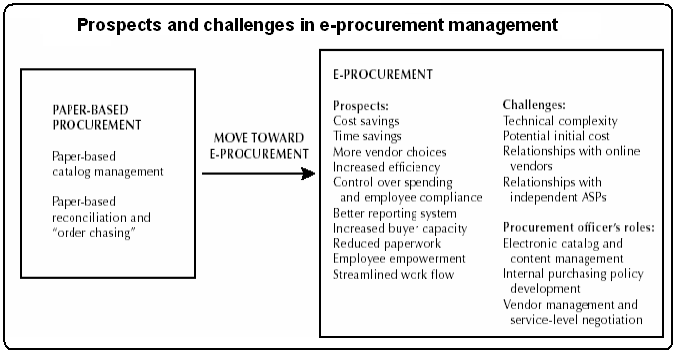
E-Procurement Quality (EPQ) Measurement Scale
Brandon–Jones & Raaij (2005, pp. 1-17), concept of the EPQ (E-Procurement Quality) deals with the outcomes of replication in order to remove the dilemmas of present EPQ scale grounded on a survey that focuses on the e-procurement system users. Make a comparison between the organisational scenarios and the customers’ opinion research outcomes of the EPQ has assessed six factors and proposed proper application of those and also suggested probable modes of EPQ scale improvements. Moreover, the EPQ scale enable a manager identify the strengths and weaknesses of the enterprise and regarding this SWOT analysis of the enterprise can easily assessed. Concept of e-procurement quality scale deals with the e-ordering process that conducted through a web-based tools regarding to automate the overall ordering process. In simpler form, EPQ scale is a tool that include all of the seven categories of e-procurement such as- web-based ERP, e-MRO, e-sourcing, e-tendering, e-reverse auctioning, e-informing and e-market sites as well as web-based supplier relationship management and management of expenditure. Impact of all of these steps reduces the compliance costs as well as transaction costs. Jones and Croom (2005) invented and proposed six factors model of EPQ scale as said before and the six forces are- training, professionalism, processing, content, usability, and specification respectively shoed in the following figure and there after the figure contained crafted benefits from these six steps. (Finnforest 2009, pp. 5-38).

Dilemmas of E-procurement Implementation
According to Aberdeen Group (2005, p. 32), following are the basic challenges or dilemmas in implementing successful e-procurement though it is a smarter and faster process in supply chain management-
Supplier enablement: at first, underestimation of the required time, effort, and resource is one of the challenges for both of the buying enterprises and suppliers due to the electronic business transaction. Traditionally, established corporate utilise “Supplier Enablement Approach” as showed in the following table. This table has encompasses a trade-off among different parties essential in the e-procurement process such as- solution provider, supplier and end users due to enjoy cost effectiveness and make all over the procedure simpler, faster and accurate.
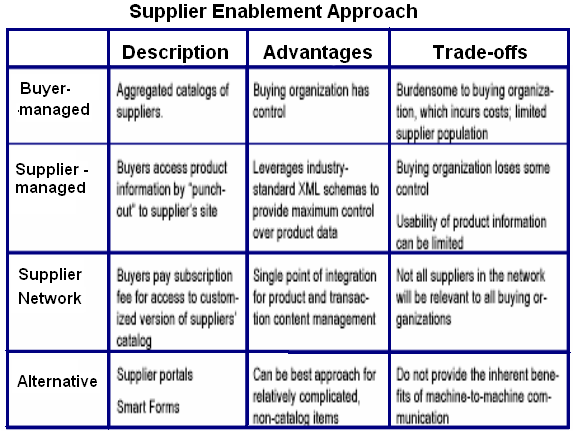
User adoption: Aberdeen Group (2005, p. 33) argued that internal team of the business enterprises and the individual end users always seek fruitful transformation that would enable to make rapid both the buying power and buying flexibility under the concept of user adoption. Due to the recent magnification of the suppliers user adoption is enlarged proportionally. Moreover, users have less scope to avoid numerous suppliers and products available in the e-procurement. On the other hand, attractive packages of the supplier enable to turn buyers towards them though frequently they cannot serve adequate spending details required by this system. Suitable uses of the user adoption can brought an enterprise label of the “Leading Sellers”.
Budget and policy support: according to the Aberdeen’s e-procurement benchmark research evaluated that though there have a chance to muffle or delay profit the e-procurement, most of the suppliers have seek secured budget policy. Another part of the research, emphasize on the component of the investment- adopt cost effectiveness, adopt efficient process and other areas of e-procurement reimbursements as assistant.
Stepping up to the challenge: Schul & Blanc (2008, p. 10) argued that due to rapid transformation of the procurement model, supply and buy is now considered as separate issue. However, ignorance both operational and strategic challenges is a reflection of consciousness. Considering the following factors of the figure impact of functional challenges of global e-procurement is stepping up as bellow. Make balance among the enterprises own requirement, strategies, and interdependence following seven mega trends forces should be treated or sought out.7
- First, supervision of cost reduction under optimal competition and pressure,
- Second, seek the scope of global entrance.
- Third, seek unique proliferation those could be hold a sound and dynamic trade off among suppliers, buyers, and external partners.
- Forth, continuous adoption of recent technology that would transform the product, operations of the procurement rapid as well as advance,
- Fifth, always attach with innovation and revenue growth.
- Sixth, always be aware of the alteration of the customer test and demand.
- Finally, strictly follow the ethical requirements as well as environmental responsibility and complex regulatory.
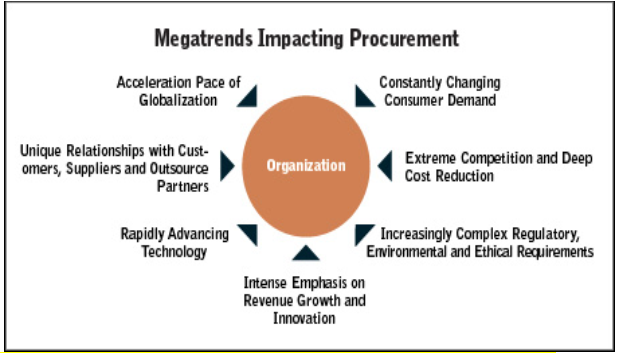
E-procurement & traditional procurement and their relationship
Pierson (2002, pp. 1-9) stated that early of the 21st century supply enterprises focus almost on timing in procurement and during this period, procurement process was conducted through only complicated and slow paper based. At the beginning of the 21st century employees as well as their enterprises was started to enquire better-featured procurement timing that must have the ability of high speed and less utilisation of papers. In March 2000, a dramatic procurement system named e-Counterline system was launched that reduced operating costs at a lower level. A research has encompasses that more than 7,500 internal users order by the e-Counterline. Number of products is more than 1 million and among them annual purchased is about 10,000 and finally, delivered about $ 25 million of the annual purchase. Increase of product line in e-procurement has not only has also reduced organisational challenges and makes easier technical and functions of the organisation.8
Pierson (2002, p. 7) said that modes of procurement under traditional process-papers for the purchase order, telephone, fax, handwriting requests, vehicles for both road, air, water or by train, e-mail, personal credit cards, EDI (Electronic Data Interchange) etc. compare to traditional e-procurement process is developed through the Oracle computer programming or the Oracle’s purchasing solution. A framework of the traditional procurement is showed in following diagram composed of three internal businesses. (Bestpricecomputers 2009, pp. 2-3)
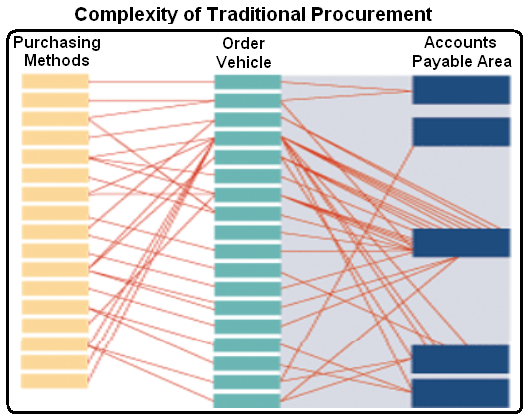
Trade-off between e-procurement and traditional procurement: Pierson (2002, p. 4) also mentioned that since traditional procurement most of the time fails to reach at the proper time e-procurement has developed to overcome this dilemma. For instance, utilisation of the B2B transactions under e-procurement in 2004, USA reached at $ 2.7 trillion. On the other hand, online purchasing process enable to maintain a multidiscipline task at the same time where as it was quite impossible by the paper-based transactions. As well as the basic areas of transaction like- supply chain and procurement, online system can take care of the corporate IT, finance, accounts, and management at once.
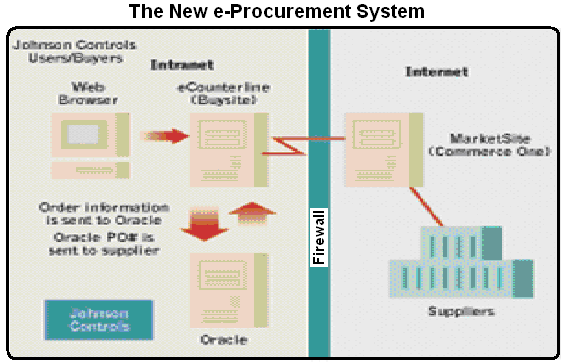
At last, except prompt order delivery, easier communication, larger product line, e-procurement provide high quality products, online shipment, enlarge profit and customer, have the scope to discover the world by single click, reduce administrative and operating costs. In simpler form, trade-off between traditional procurement and e-procurement can interchange only their limitations and merits respectively. Golden tools of a business provider are showed in following table.
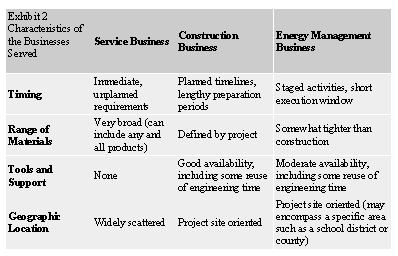
The Role of Buyer’s Power in E-procurement & traditional procurement: Smeltzer & Carter (2001, p. 5) argued that buyer’s power has a direct influence on decision making of an enterprise. A proper explanation of this concept has described by “The Buyer/Seller Centric e-procurement Model” where both number of suppliers and buyers in a market place is focused equally. Viewpoint of traditional procurement, complexity is higher in the marketplace where both supplier and buyer are numerous. However, around this atmosphere, buyers always prefer a lot of suppliers rather than huge buyer. In case of risk consideration, both wrong supplier selection and existence of huge supplier ion the market place carry higher risks. 9 On the other hand, from organisation’s perspective, the buyer centric e-procurement model, enlarge the purchasing compliance, capable to sell in both of the vertical and horizontal market, by utilisation of reverse auction tools leverage the buying power and finally, efficient management of surplus inventory liquidation.10

Smeltzer & Carter (2001, p. 3) and Carr & Ross (2003, pp. 1-16) also added that in order to overcome the complexity of the aforesaid model, this part of the buyer’s power exhibit another approach, “the Value Propositions for the Models” and there after proposals for performance improvement, hypothesis for both of the quality performance and operational performance respectively. Value propositions not only pay attention on larger suppliers but also considered the smaller organisations benefit. Two major efficient outcomes of the value propositions are- it has reduced cycle time dramatically as well as improved quality of the manufacturability and reduced logistics costs ensuring the better customer services.11

ROI for E-procurement & Traditional procurement
Dominick (2008, pp. 1-2) argued that utilisation of procurement technology brought a dramatic improvement in business. Though senior management have no interest to invest in procurement technology but the most of the procurement professionals try hard and soul to get them. Regarding to a sound ROI12, professionals are focused mostly on investment in procurement. E-procurement has the ability to make easier communication and greater return of the investment, which is the concept of ROI. For instance, creative communication aid can enlarge the profit margin of the enterprises 10 % greater than before which would amounted about 1.5 million $. On the hand, compare to previous cost savings and ROI e sourcing perform better as well as ensuring high speed. Moreover, ROI treated as a procurement technological tool rather than a strategic approach.13
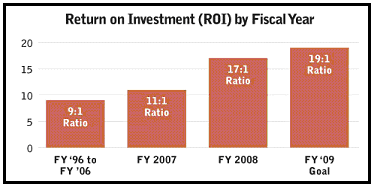
Hope-Ross (2001, p. 6) stated that since 2000, a vast utilisation of the B2B in the vertical market, amount of investment of a supply enterprise was increased by $ 5 million and appoints consultants for 30,000 working hours regarding to e-procurement solution. Return of this initiative enlarge their product line and cut out their compliance rate by 50 %. Expected ROI model, actual ROI model and cost savings under ROI model has showed in following figure respectively from viewpoint of traditional procurement.
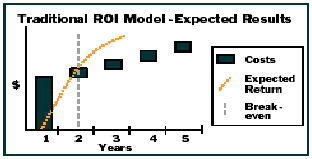
Methodology
Research Methodology
Marshall and Rossman (1999) argued that the research methodology describes the design and method of any particular research work. Ghauri & Gronhaug (2005, pp. 98-165) argued that the process of designing an overall plan for bonding relationship between the theoretical research predicament and the sensible experiential research is known as research design. That means the research design provides the procedures to collect empirical data and to analysis of data. Zikmund (2008, p.83) stated that the research design usually includes three types of research namely exploratory research (is done to further clarify the research objective and the research topic), descriptive research (is done to find out answers of who, what, when, where, and how questions), and causal research (is done to find out the cause and effect relationships between variables). These research types or methods have their own techniques for the desired course of action. Ghauri & Gronhaug (2005, p.101) further argued that researchers should use the descriptive research when the problem at hand is well structured and well understood. Yin (2003, p.60) stated that the research purpose of any study usually determines the best method of conducting a research work. Since in this case the problem at hand is well structured and well understood, the descriptive research design was employed. The descriptive research requires several research approaches and research techniques. Zikmund (2008, p. 278) mentioned that the descriptive research is based on the preceding thought about the nature of the research problem. He further argued that it often is used to decide the market segments and target markets. Furthermore, though errors in the research process cannot be eliminated, the accuracy in the research work is the supreme significance of the descriptive research.
Overview
The chapter is organised to delineate and thrash out the different techniques and processes those were used to perform the research work. In performing the research work, descriptive research design was used. The research methodology further included the deductive and qualitative research approach since these approaches were thought as the perfect for the study. The interview was used as the primary research technique to find out the actual data. Some descriptive and inferential statistical tools had been used to analyze the data collected. In this chapter, following, there are descriptions regarding the reasoning behind the selection of these methods and procedures.
Research Approach
Mibenge & Okoye (2007, p. 81) argued that research approaches can be categorised into two categories such as deductive (is also known as top down approach) and inductive (is known as bottom up approach) research approach; and qualitative and quantitative research approach. Burney (2008, pp. 9-10) stated that the deductive approach works from the more general premise to the specific premise in a research design, that is, it follows premises to form any conclusion of interest. He further argued that the approach usually sees the theory in the general notion and then narrows down the theory to the specific notion. On the other hand, the inductive approach follows completely a different way, that is, it first looks at the specific observations and then climbs to form theories in a general perspective (Burney, 2008, p. 12). Withholding a level of uncertainty, the approach usually forms conclusion based on the premises. Burney (2008, p. 9) further argued that the deductive approach uses arguments derived from regulations, imperatives, and generally accepted standards. On the other hand, the inductive approach usually uses the observations of a general setting.
Saunders, Thornhill & Lewis (2003, pp. 4-17) & web1 (2009, p. 10) stated that the quantitative research is an examination of a well understood problem that uses the theory testing bases those are measured by numbers and are analyzed by using empirical statistical tools. The basic goal of the approach is to define whether the general premise of a theory is true. It further asserted that the quantitative approach assumes that the reality can be measured objectively. In this research approach, the researcher should stay away from what is happening. The research approach is values free one, that is, the researcher’s values do not change research’s values. In this approach, the hypotheses and theories are tested based on cause and effect order. The approach aims at developing over-generalization to assist theories so that the researcher can easily forecast, describe, and recognize any phenomenon of interest. It usually involves experiments, surveys etc. On the other hand, the qualitative research approach entails an examination of forming an understanding about a general premise from different perspective. It has done in a natural background to form the multifaceted and holistic view of the subject of interest. In this approach, the researchers believe that there are multiple realities exist in any given situation. Here, researchers directly interact with the people researched by them to eliminate any gap between the researchers and those are researched. Here, researchers can easily identify the value-laden environment of the research. In this approach, the determination of research accuracy is done by comparing the information taken from the informants and the information from other sources. The process usually contains case studies, ethnographic studies, phenomenological studies, interviews etc. as the research strategy.
Siegle (2009, p. 1) argued that qualitative research has interested primarily in the process of something happening not in the products of a process. This approach has concerned with the experiences people hold, the structure, and the meaning of their surrounding. This is completely a tool for descriptive research. On the other hand, the quantitative research is a process, which has domination of method not the subject matter withholding point of view emphasizing the outside. It proposes that variables can be easily identified from the general settings and relationships among these variables can be easily measurable.
Since in the research study the researcher is willing to use descriptive research design, hence, the qualitative research approach had best suit the research design. Furthermore, the research setting was completely analogous to the qualitative research.
Primary research – Research Strategy
Saunders, Thornhill & Lewis (2003, p 33) argued that the primary research has aimed to collect information that are not available or that does not subsist, that is, a collection of original data. It further quoted that the techniques employed in primary research are survey (both online surveys and questionnaires), interview (both face-to-face interviews and telephone interviews), observation techniques, focus group study etc. to collect the information of interest. In this research work, the researcher used the interview technique to obtain the interested information.
Reliability, Validity of Interviews
To ensure reliability and validity of interviews in this research, some suggested criteria had been followed. Kvale (1996, p. 17) suggested that the interviewer should follow the following guidelines to ensure reliability and validity:
- For the purpose of informed conversation, the interviewer must carefully know the subject matter;
- Give clarification of the structure of the interview to the respondents;
- Give interviewed time to answer and follow the verbal and non verbal communication made thereby;
- Be sympathetic to the interviewed and be alert to those subject matter important for the participant;
- Keep to the point;
- Compare between questionnaires to ensure constancy, reliability and validity;
- Be able to remember previous statements and make modification to the participants’ statements by depth questioning.
To further ensure reliability and validity of interviews, extreme dependence on the open-ended questionnaire had been avoided since Cohen, Manion, & Morrison (2007, pp 19- 20) argued that the open-ended questionnaire has several impediments toward the reliability and validity of interviews. Only few probing questions were open-ended in this study.
The Interviews
Kvale (1996, p. 19) argued that the interview, a research technique, usually obtains information through conversation and avoids to see that the human subjects are easily manipulability and information of interest is external to the human interactions. He defined the interview as an exchange of observations on a subject of communal concentration in between people for the purpose of acquaintance creation by holding the centrality of human interface, which gives emphasis on the communal existence of research information. Cohen, Manion, & Morrison (2007) quoted that the interview is the most stretchy research technique and it enables to include several sensory ways such as verbal, non-verbal etc. There are several types of interview such as standardized interviews, in-depth interviews, ethnographic interviews, elite interviews, life history interviews, focus groups, semi-structured interviews, exploratory interviews, closed quantitative interviews etc. (Cohen, Manion, & Morrison (2007)). For the purpose of the study, structured interview was used. For designing the structured interview, the researcher made a few informal conversational interviews beforehand and thereafter designed the close-ended question for the final interview.
The judgmental sampling was used in the study. Zikmund (2008, p. 102) argued that the judgmental sampling is a non-probability sampling in which the researchers select respondents assuming that the respondents are well known about the subject matter. The researcher had interviewed 20 people taken from the company personnel and persons from the supply chain of the company to know about the efficiency of e-procurement. There were different probing questions presented for better understand the subject. The researcher interviewed all these people for consistency.
Data Analysis
Cohen, Manion, & Morrison (2007) argued that the data analysis of an interview is usually a work of coding and scoring. He further argued that since the data from interviewing is qualitative in nature and hence, data analysis does not actually portrait the actual scenario. Miles & Huberman (1994, p. 99) argued twelve techniques for the analysis of interview data:
- Calculate occurrence of a particular answer;
- Verifying the pattern of the occurrences;
- Use the knowledgeable guess to reach a conclusion;
- Categorizations of the collected information into types or classes (such as ‘Yes’ category and ‘No’ category)
- Make reduction of collected information and retain that meet the theory;
- Set the meaning of information to form ideas;
- Set clarifications for the main conceptions;
- Keep a number of variables under some unobserved variables;
- Make relationships between variables;
- Clarifying the dominant variables;
- Keep track of causality and make conjecture thereto; and
- Make knowledgeable lucidity.
These guidelines have followed in the study with due care. For the purpose of categorization, frequency determination, data reduction etc., some descriptive statistics were used in the study such as frequency distribution, grid, graphs, and tables. For making inferences or conclusions, the researcher used Chi-square test. The chi-square test is a measure of goodness of fit (Zikmund 2008, p. 37). It is usable when the sample size is very small. Here, the researcher tested some hypotheses to reach conclusion about the performance of the e-procurement system.
On the other hand, to build up relationship between traditional and e-procurement, the researcher used secondary data collected in the research process. Furthermore, standalone e-procurement examples were also reviewed and compared with Finnforest’s e-procurement system.
Contingency Plans
The contingency plan is delineated to handle non-desired situation when something becomes wrong (Cohen, Manion, & Morrison (2007)). For the better completion of the research study, the researcher set some contingency plans. However, the sample size was of 20 people but the researcher communicated 30 people so that the interviewing could easily be completed if some of the respondents were missing. However, the researcher was mostly dependent on practitioners but he had planned to go to academia if practitioners did not give the information of interest to meet standards.
Secondary Research
The secondary research is a research process aimed at collecting the existing data (Zikmund, 2008). Hill, and Kerber (1967, p.46) argued that the research usually solutes contemporary issues; spotlights on past and future scenarios enables to generate hypotheses, theory, and conceptualization of what found in the past. In this study, the secondary research mainly established the premise of theories, helped to generate hypotheses, helped to compare performance of e-procurement and to bond relationship between e-procurement and traditional procurement. The e-procurement using company profiles and performance measurement papers of these companies were collected for the very purpose. Moreover, the researcher collected different research papers, articles, journal articles related to the study.
Limitation of Data Collection
Since the research study is highly dependent on primary data (interviewing), the research study is constrained by the general limitations of interview such as:
- Interviews were much different from one another;
- Regarding the critical success factors across the supply chain, the respondents had avoiding tendency;
- The respondents were maintaining the organisational disclosure principles, therefore, actual data in some extent was not available;
- It was completely impossible to imply rationality in every encounter.
- Some other limitations of the study are:
- It would be much informative if the researcher could involve own self in the total supply chain to better understand the functioning of the e-procurement;
- If the researcher could do an industry wide comparison of e-procurement and traditional procurement, it would have been more realistic; and
- The few companies were willing to provide both primary and secondary data.
Findings
Existing e-procurement process of the Finnforest
Part of a supply chain management, e-procurement of the Finnforest Corporation would be narrated in this part. Finnforest (2009) argued that by executing sales and operations globally, annual return from the timber products is about 1.2 billion € (Euro) and more specifically, owner of 125, 000 private forests in Finland. At early of the e-procurement account, customer segmentation considering of both primary and secondary timber manufacturing along with supply and distribution of the finished goods has three prime types as bellow.
- First, “Do It Yourself (DIY)” retailers or home improvement
- Second, both construction and industrial companies
- Third, merchants of timbers and builders
Selecting the UK geographical location, this part mostly focused on supply and distribution process to the DIY retailers and at the end of this process, there have a proposal for further improvement of the existing process so that the Finnforest would achieve a lower operational cost and compare to low lead time and better customer service than before14. For the DIY retailers supply chain, three stage approaches would be described as following figure. Following are the key stages bring up in sequence.15
- Understand key process
- Analyze process
- Redesign process
- And the proposal
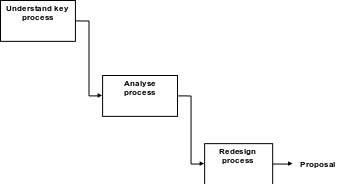
Before starting detail account of these approaches, let have a precise look of these stages- “understands the key process”, require knowing the route of supplies of timber products from Finland to the UK to the DIY retailers. Utilisation of two tools aid- flowchart and a pipeline map finished goods would easily delivered. Analysis the process or the second step, fruitful approach is to process mapping. With the aid of process mapping, it’s trouble-free to appraise of existing wastage of the supply chain as well as cost reduction achievement. Ahead of proposal, redesign the process, make decisions foundation on the previous two steps. Analysis of the first two stages, enable the procurement managers for prompt decision making as well as redesign the existing process regarding to cost savings. Finally, proposal is for the improvement of performances that rely on the completion of the third stage, redesign the process. Aggregate outcome of this stages impact on the overall operating functions of the Finnforest such as- better customer service, cost reduction, lead time reduction, prompt delivery etc.
Understand the key supply chain process
As showed in the following figure, understanding of the key supply chain process has accomplished through a diagnostic module that has to meet five stages and termed as “Block Flow Diagram”. Since to identify performance background, overcome poor performance, achieve a vast change this diagnose can make relieve. In another word, this module can be termed as detail investigation, which reaches all of the steps of the supply. Overall timber products supply has sketched in following diagram.

The forest: Finnforest (2009) stated that establishment of the supply chain launched from the domestic forest of the Finnforest where tree are available.
Primary manufacturing: according to Finnforest (2009) sawmills are the place where trees are turned into timber.
Secondary manufacturing: Finnforest (2009) also added that waterways are used for the distribution and supply to the UK of processed timbers. Considering customer demand employment machine secondary manufacturing operation has started.
Finished product warehouse: Annual report 2008 of Finnforest stated that depend on retailer’s call, finished products are supplied and distributed; otherwise, they are stored in the warehouse.
Retail outlets: Finnforest’s prime retailer customer segment is the DIY (Do It Yourself). Finished products stored at warehouse is directly delivered to the retailer today by online purchase order or e-mail but a few years ago phone call, fax, direct meeting and paper documents were used for this process.
Five locations of the diagram: detail account of the five account of Finnforest supply chain process-
Data gathering: Interim Report of The Finnforest Corporation (2005) argued that data collection is a compulsory requirement in operating major steps in the process. Required time is the most fostering point of this stage. Though understand the poor performance can easily appraised by a simple metric and effective time identification and wastage diagnose be measured. A process operating is also required communication modes understanding and gathered expediency relatively make easy. Moreover, it also evaluated better scopes that would enlighten the overall process. More specifically, time and inventories are the heart and soul of each steps of supply chain management. Focus on the time and inventory data have gathered as well as measured through following there ways-
Activity time: for an individual item, required time to finish has considered as activity time or in other way, required time for physical undertaken.
Lead-time: time taken to make any finished goods processing and reach them in the proper place has executed under lead-time. In another word, any activity time spending is involved in lead-time.
Inventory: an aggregate form of raw materials, finished goods, and goods in working process is termed as inventory. Here also point out demand of inventories by daily basis. (tutor2u 2009, pp. 1-2)
Supply chain steps including performance appraisal of the Finnforest is plotted in the following table.
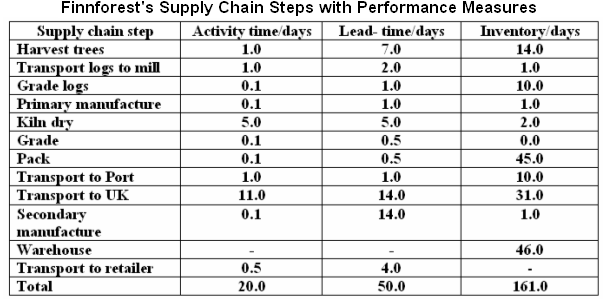
Diagnose of the performance appraisal table showed that a completion of activity requires 20 days where as inventory period is of 50 days and 161 days inventory utilised in the overall supply chain management.
Analysis the process
Chapman, Thayil & Harrison (2001, p. 17) considered two leading approaches- the pipeline map and the processed map considering time duration. As par following figure, pipeline map approach composed of required inventory and lead-time at once. Relative forces of the pipeline approach have plotted in the following table.
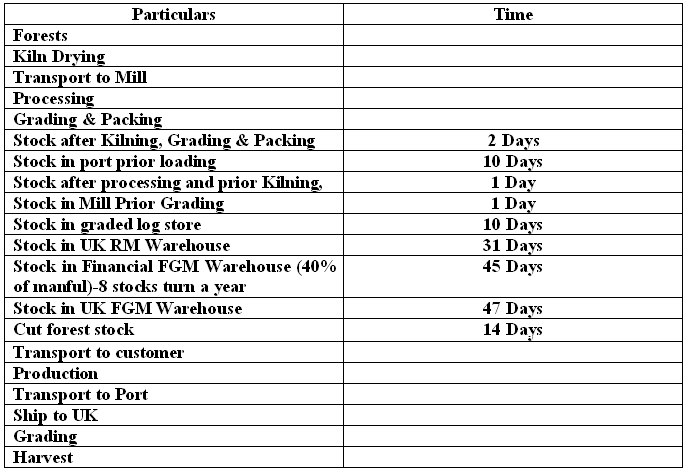
Time based processed map (TOP): regarding to lead-time, TOP has presented in a Gantt chart. Both the lead-time and the activity based time through all over the process and every step is plotted here. In case of emergence of the supply chain process there have an additional part to alert if there would any scope of lead-time break down.
Chapman, Thayil & Harrison (2001, pp. 8-9) argued that activity time represents required time turn into a physical outline where as for each step process value; lead time represents the amount involved in activity time. As said by the definition, assessment of the lead-time has started before any activity was established. In addition, lead-time consists of not only activity time but also considers the idle time. Hence, present performance data along with the assessed idle time is provided by an aggregate form by means of TOP. Thus, pay attention whether idle time was aroused and how it would repair by a proper manner. Based on TOP the Finnforest Corporation has monitored heir manufacturing data consists both of lead-time, activity time and idle or waste time. Pipeline map of the Finnforest is showed in below-
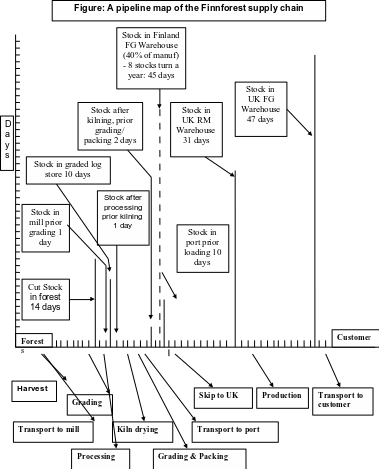
Within the above figure, horizontal exist presents the leads time of the company, on the other hand, vertical exist shows the required inventory. More specifically, both horizontal and vertical bar is proportional to each other which assessed by number of days in both of the cases. Hence, existing supply chain represents both waste and value addition at once and in a simpler form.
- Redesign process: categorized in the same units both inventory and the lead-time represent the performance level of supply chain of the Finnforest. Inventory and the lead-time exist on a significant affiliation regarding to ballpark figure of both safety stock and cyclical stock with the increase of lead-time of the existing supply chain. On the other hand, reduction of lead-time is cause of inventory decrease and these impacts on working capital, shift of customer demand as well as their awareness.
- The proposal: concentrate on the aforementioned all of the stages and their outcomes this paper has wished-for the Finnforest Corporation would grow faster and enlightened itself than before if they more focused on appropriate software utilisation like ASP rather than traditional procurement accessories coordination or B2B supply chain module.
Effectiveness of these process flows
Roekel, Willems & Boselie (2002, pp. 55-56) argued that according to the following figure, three fundamental market-driving forces foster and recommend the supply chain partners. They are respectively as- market segmentation, customer demand and finally low cost strategy. For the developing countries established in the global market, utmost significant supply chain collaboration is fastened through- consumer’s test and demand, profitable market, relevant information flow, product line or goods, capital structure composition, transaction costs budgeting, adoption of recent technologies etc.16
Roekel, Willems & Boselie (2002, p. 2) also added that concerning the western consumers’ in the market segmentation and their prompt life style transformation, particular product’s demand fulfillment has to need diagnose- fair trade, organic, pre-cut, exotic, products of ready-to-eat etc. Considering these entire dynamics offer value-added of customized products and services it is really a challenge for the development of the new product and make a distinction between the existing chain and the offer to fulfil the consumers demand.
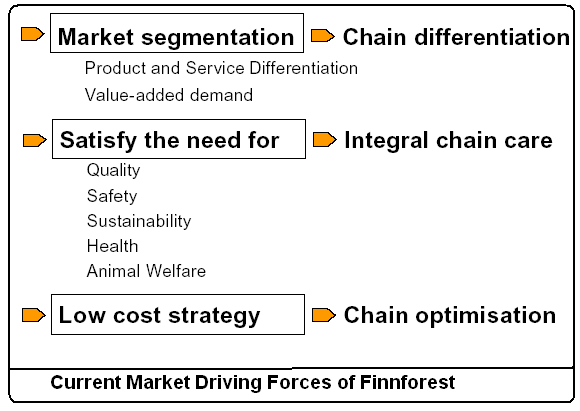
According to Roekel, Willems & Boselie (2002, p. 45), another requirement of the customers is ensuring safety and health at the optimal level. Social responsibility, corporate responsibility, responsibility for the environment, welfare activities for the street children and animal are involved in the customers’ awareness. Another modern goal; of the society is motivated on the way of sustainability. Keep the customers’ confidence, existing companies in the chain ought to aware of and stay under the common umbrella as well as keep cooperation among all. In addition, keys of success factors are- care of fundamental chain and ensure better quality.
Roekel, Willems & Boselie (2002, p. 51) argued that due to continuous escalating of competition globally, here exists a pressure of the supply chain partners is to costs reduction. Chain results have been optimized by the cut down of the transaction costs as well as the successful deduction of activity coststhey also added that requirement of the integral approach regarding to manage supply chain by an aggregate form planning and control are include- adequate information, modern technology, flow of the goods processing and capital formation approaches. In short, collecting raw materials from the suppliers, to processed finished goods and reach to the customers. Supply chain management has to construct as customer oriented in the means of efficient and quick delivery of customers’ demand. Aim of production process is to coordinate appropriately. Outcomes of the supply chain management are categorized into two broader form- margin enlargement and transaction costs reduction. Due to multidisciplinary approach exists in the demand curve as well as trade-off sustainability. On the other hand, interdependence, frank communication, trust, and mutual benefits are the dynamics of supply chain partnership.17
Roekel, Willems & Boselie (2002, p. 55) mentioned that there are handsome advantages are crafted from the supply chain management approach. Fundamentals of them are-
- First, achieve economies of scale or larger scale of production that boost sales value.
- Second, modern technology adoption and their proper distribution, appropriate capital formation and adequate information.
- Third, coordinate among the chain partners.
- Forth, three key aspect- market, product, and technology are presented by means of latest information.
- Fifth, a transparent and accountable for SCM18
- Sixth, both source track and trace suitably.
- Seventh, both safety and quality control of the product at optimal level.
- Eighth, risks diversification and scope of portfolio investment satisfaction are available among the partners.
Fundamental dilemmas of Finnforest’s SCM
Holma (2006, p. 171) said that a set of intermediaries and lengthy process exists in the sawmill industry of the Finnforest Corporation’s supply chain management. Negative impact of this longer procedure is- lack of transparency and accountancy. On the other hand, this larger distribution process generate awkward atmosphere in information exchanging throughout each stages. Another dilemma a longer period required in delivery and in managerial tasks execution.19
Holma (2006, p.103) also stated that chain stock at a larger scale and scattered them in various areas from introducing point to the end users. Therefore, there have an extent of fluctuation business cycle and make anxiety all over the phases. Excluding this trend, indistinct perception is unnecessary in the supply chain management and future demand forecasting. Another significant issue aim and objectives of the intermediaries are quite different from the suppliers. More specifically, goods distribution and round wood matching is too difficult in this lengthy process. Hence it is examined that there have a different business cycle exists in the raw material and ready saw wood. A worst affiliation in stayed alive between the forest owners and saw millers though lead-time is too short of the horizontal business relationship. The contract period become shorter when demand of the market typically declining though numerous sawmills struggles for construct durable business association.
Most of the time based on statistical report, sawmills are fail to evaluate actual customer demand. Lack of flexibility in production policies labeled sawmills as “deeper business cycle”. Another appraisal showed that still now sawmills of the Finland are mostly production oriented. In addition, common dilemmas survive in almost all the factories are- internal crisis. As for example, executions of business operation there have lack of common opinion and working regulation between the production and marketing personnel. Moreover, also in the structure of the forest in Finland are structurally different between the owners and the rivals. Rather than public private owners dominates in the industry. More than 300 thousand forests are scattered through the whole Finland privately. Private owners are get priority in Sweden also. More particularly, second biggest state owners are Finland and the private companies is Sweden. Rather than Finland, Sweden gets more scope of sawmills business and transparently show their income and balance sheets.
All of the previously mentioned evaluations are critically discussed about the structural alteration and execution of business operations. Modes of overcoming the above dilemmas are transparently viewed as follow:
- Structure: first, along with the long intermediaries marketing channel and distribution structures are composed. Second, inventories are stocked unnecessarily extensive in the existing supply chain management.
- Relationship: communication gap and the supply chain is not enough transparent. Non-durable business relationship, internal conflict in sawmills as well as poor control system. There is absence of affiliation among the raw material cycle, raw material suppliers, and sawn goods.
- Behavioral management components: required comparatively longer period in distribution, prefer dominating power while making relationship, lack of coordination in management thinking and consolidation.
Discussion
Introduction of Finnforest Corporation’s E-procurement
Fylnn (2000, p. 17) argued that E-procurement is an opportunity which avail the savings and profits of any organisation. Most of the products and services of an organisation have gained 50% of revenues with administrative resources costs and products and services costs. The technological power of Web and Internet has created this opportunity to reduce these costs by the e- procurement in the process of internal and external organisation. Every business has emphasised on e-procurement strategies rather than the traditional procurement.
According to the BPC, UK (2009), e-procurement is mainly a process of supplier exchange in B2B or B2C or B2G buy and sales of products and services by transferring information by Internet. It is only accepting registered users to buy and sell goods or services, by determination of costs and volume. The software of this system has enabled automatic buying and selling of participants within the organisation to use the inventories more effectively and to improve the manufacturing system of the products. It also allows the Purchase to Pay Value Chain system instead of supply chain management.
Finnforest Corporation, as new dimensional organisation of wood construction, it must be used e-procurement for continuing the success of its business in the competitive market. Finnforest Kerto (2002) stated that there are mainly seven types of e- procurements, which can be used by Finnforest Corporation and these are –

- Web Based ERP (Enterprise Resource Planning): In this process, the demand of supply in purchase is created, order has been placed, and goods and services are received by using a software system by Internet. In Finnforest, Web based ERP can be applied in the supply of wood products to the customers and the end customers can also have their goods without going out home by using their internet only. (Chopra, & Meindl 2008, pp. 48-90)
- E- MRO (Maintaining, Repairing and Overhauling): It is almost same as Web based ERP system, except the ordering systems of MRO is related with non- products. For Finnforest Corporation, E- MRO is not as essential part of e- procurement.
- E-Sourcing: By this process, new suppliers are identified for purchasing specific requirements of any goods or services with the help of Internet. For special offers of purchasing, Finnforest Corporation is used e- sourcing.
- E Tendering: In this process, the organisation has sent requests to suppliers for information and prices of goods and services by using Internet. Finnforest is easily known about the quality and prices of suppliers of woods and other raw materials compare with other suppliers.
- E-reverse Auctioning: By this process, goods and services are purchased from known and unknown suppliers with the help of internet. This process is rarely used by Finnforest Corporation, as the organisation is not purchasing from unknown suppliers to ensure quality of their products.
- E-informing: This process is used to gather and distribute purchase information from internal and external parties through internet. It is an effective process for Finnforest Corporation to gather appropriate information about products, suppliers, and ultimate customers.
- E-market sites: In this process, from the value chain starting with suppliers to communicate with customers in the financial systems, all parts are included in E-market sites.
Therefore, Finnforest Corporation is managing its value chain by e- procurements with the contents of catalogue and contract management with the indenting process of administrative and technical support as in electronic format, like Internet or software system. (Finnforest Corporation 2005, pp. 3-9)
E-procurement Technology/ Infrastructure of Finnforest
Kokko, et al (2006, p. 5) pointed out that as e- procurement is a centralised web based system, it helps to eliminate the uses of paper transactions in buying and selling process of value chain of suppliers. The technology of this system is automatically managed the contracts, considering the price discounts and rebates analysing across all organisations. The set up of e- procurement is not easy to being as successful implementation. It is needed to being strong collaborative methodology by using large investments in technology, which is easy to be used by suppliers. The latest technology is used for e- procurements to achieve business goals of Finnforest Corporation, to implement the planning of manufacturing, and to communicate with suppliers and customers. It is also helpful in developing strategies in supply chain management of the organisation and to implementing the problems and to measure the final solution.
CBS Interactive Inc (2009, pp 1-3) stated that Finnforest is using mySAP Customer Relationship Management in E- selling of customers’ services with helping them in the buying process, helping staffs in free sales of products and services and helping the organisation itself to generate more revenues. Customers are having information about business catalogues according to their regional requirements.
The infrastructure of e- procurement is not just a technology, but also a process of exchanging transactions in the business to customers as a common understanding form of communication. There are mainly three types of e- procurement infrastructure is developed by Finnforest Corporation, which are:
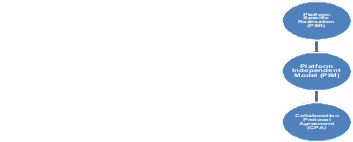
- Platform Independent Model: This model is described about the process of business by using technical implementation of any specific projects of its business. This model is helpful for Finnforest Corporation in defining and describing the behaviour of business to the public, like customers, suppliers etc.
- Platform Specific Realisation: The platform specific realisation is used to be implemented any specific technology, like mySAP, as transactional approach of business process to customers. This model covers transactional process of business implementation between buyers and sellers of Finnforest Corporation.
- Collaboration Protocol Agreement (CPA): It is a commercial agreement between customers and Finnforest Corporation, for using PIM or PSR as e- procurement infrastructure of the business. It is also contained:
- Using E- catalogues for information
- Exchanging documents
- Enforcing security management of e- procurement
- Allowing time for processing
Finnforest Merk (2008, pp. 17-42) reported that in the technology of Finnforest Corporation, the software of e- procurement is designed by considering all common standards, like BS, DIN, EN for timber, the structural design for workshop is described, the technology of 3D is developed, and the corporation is linked up with CAD and CNC production for their business.
E-procurement Process Flow of Finnforest
E- Procurement process has used for reducing errors and administrative costs more than 75%, considering as Total Cost Management. In Finnforest Corporation, the procurement process has involved in manufacturing and delivering products to the ultimate customers with a regular and reliable supply of raw materials. Sloan (2009, p. 2) argued that the e- procurement process of Finnforest Corporation could be developed like the following way: (Finnforest Kerto, 2002, pp. 8-14)

Therefore, for successful e- procurement process flow in Finnforest Corporation, it has to make close contact with software companies and software solutions programmes according to organisational structure. Finnforest Merk (2008) reported that the team of e- solutions are developed the process flow with innovation and economic concentration in their operations, customers’ services, research and development of the corporation. The engineers and team of R&D have good reputation in Timber construction for continual innovation of materiality in all over the Europe. Finnforest Corporation is also known as competent, reliable, and trusted organisation for the development of e- procurement process flow.
E-procurement efficiency of Finnforest
Sloan (2009, p. 1) & Fylnn (2000, p. 20) argued that Finnforest Corporation has regular and reliable supply of raw materials in manufacturing process and delivery of products to the ultimate customers according to orders with the help of successful e- procurement process in organisation. E- Procurement is an invaluable tool in supply chain to purchasing methods, which is benefited for the organisation. Some benefits of Finnforest Corporation are discussed in below:
- Opportunities of Savings: Finnforest Merk (2008) added that there are tremendous opportunities for Finnforest Corporation to develop e- procurement for their organisation by high volume of discounts in products and services. The visibility of e- procurement is realised to buy products and raw materials from different suppliers with volume discounts.
- Efficiency of Administration: By implementing e- procurement process, Finnforest Corporation is reducing the contracts significantly with the help of electronic systems through internet. The system according to paper is reduced, which save times and increased efficiencies of the organisation.
- Reducing Inventories: By forecasting and planning of e-Procurement has been reducing the inventories of supply chain with electronic collaboration of suppliers. The lower level of inventory helps the organisation in reducing goods in hand, storing, and handling costs.
- High Profitability of Corporation: The saving of costs of Finnforest Corporation is resulting high profitability. It is happened because of reduced unnecessary costs, which is a major competitive advantage in the market of wood construction business.
- Improving Transparency: E- Procurement helps to Finnforest Corporation in the improvement of transparency of their products and services. The transparency has increased the strengths of competition compare with the timber construction organisation.
- Improving Customers Relationship: E- Procurement process has enhanced the customers to access easily with Finnforest Corporation in avail the products and services, which is increasing the customers and corporation relations.
- Controlling Quality Standards: By implementation of e- procurement, Finnforest Corporation has increased the standards of quality control process in all stages of organisation’s manufacturing and supplying procedures of timber and other materials. The standard of quality is enhanced the reputation of organisational status in Europe.
- Increasing productivity of employees and corporate advantages: The collaboration of customers and Finnforest Corporation is increased the advantages of corporation and is increased the productivity of employees.
- Focusing on Value Added Functions: Finnforest Corporation is enabled the value added functions in inventory and financial control by continuing e- procurement process of contract management with customers and suppliers.
Role of Management for E-procurement
Finnforest Merk (2008) said that Finnforest Corporation has long term role in the management of e- procurement, which is enabled the business to being continue on time and budget. Snabe & Herzberg (2003, p. 18) pointed out the different roles of management in e- procurement is discussed according to Finnforest Corporation are:
- Powerful Place in Organisation: The management of e- procurement has powerful place in Finnforest Corporation to dedicate the development of market organisation. (Marshall & Rossman, 2006, pp. 198-208)
- Organisation Expertise: Finnforest Corporation has broadened the range of contents and sales tools in products of timber construction with the help of e- procurement. The managers of the corporation are acting as expertise in the timber industry in competitive market. (Metsäliitto Group 2008, pp. 4-42)
- Strong bonding with Customers and Partners: The management of Finnforest Corporation has increased the customers with loyalty of services and has good relation with partners to continue its business by maintaining eco system of the environment. The corporation has also ranked as best monitoring and controlling systems, efficient process, energy technologies, and waste management.
E-Procurement Quality (EPQ) Measurement Scale
Brandon–Jones & Raaij (2005, p.67) pointed out that the e-procurement quality measurement scale of Finnforest Corporation is important part of this study. E- Procurement system has enhanced the responsibilities of purchasing departments of the organisation in the order of goods and services to suppliers and customers. This measurement scale is a computer-based tool of e- procurement with e- sourcing, e- auctioning, and relationship of supply chain management.
EPQ is emphasised on the transaction costs and buying price of e- procurement system, the Finnforest Corporation has established some important factors of EPQ, which are:
- Quality Control
- Purchase Processing
- Specific Contents
- Value added functions
- Productivity of employees
- Efficiency of costs and savings
Brandon–Jones & Raaij (2005, p. 101) also added that the perceived EPQ is concerned with e- procurement support with the system of collaboration of Finnforest Corporation. The collaboration system is focused on the customers’ relationship and purchases pricing of order are maintained by the measurement scale. The following figure gives clear results of EPQ measurement scale:
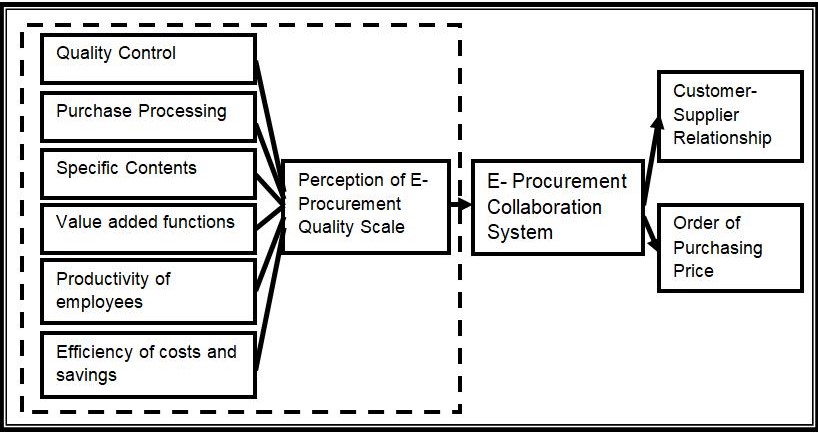
According to perceived EPQ, Finnforest Corporation has set different factors as variables in the measurement scale to determine the value of customers and suppliers according to the organisation. EPQ variables are decided by the survey to consumers of UK, but in this study, the variables are selected from the current factors of Finnforest Corporation according to customers and order price in supply chain of e- procurement.
The quality scale was developed with perceived EPQ of the organisation. The validity of factors should be examined properly with the correlations of customers and suppliers. The scale has provided the relations between EPQ and customers through the e- procurement with highest levels of reliability and validity of ongoing process of business. These factors are developed in the improvements of the measure of e- procurement of Finnforest Corporation.
Dilemmas of E-procurement at Finnforest
According to the article E-procurement: on the horns of a dilemma, (2000) and ec.europa (2001, pp. 2-9) Finnforest Corporation has maintained the e- procurement, so the customers’ trust and controlling costs have regulated with standards and regulations of organisation. The increased efficiency of e- procurement has also some drawbacks, which is backing the use of workforce with optimum level of e- procurement. These drawbacks are:
- Retailers have more access with suppliers through internet, so Finnforest Corporation cannot access direct links with suppliers compared with retailers.
- Third parties, except Finnforest Corporation, have exchanged services with retailers and suppliers, and unable to keep valuable contracts with the potential suppliers.
- UK Government set standards and regulations to implement e- procurement. Therefore, Finnforest Corporation also must maintain the regulations stated by Government.
- The rapid movement of technology has frozen the e- procurement system, which is being out of date for Finnforest Corporation.
- Finnforest Corporation may lag behind in the development of online procurement of products and services in trading of business.
Relationship of e-Procurement & Traditional Procurement
Guertiz (2001, pp. 5-18) stated that in last 20 years, the information technology has changed, which is being very helpful for every business to continue its operations. E- Procurement is one of the successful approaches of information technology based on internet, which cut costs and make fast communications between interested parties.
Finnforest Corporation has focused on business profit with implementing e- procurement system for their supply chain operations, which is primary activity of technology taken by the organisation.
On the other hand, traditional procurement is a method, where the architect is liable for designing and maintaining documentation of contractors to tenders in the operations of business. For this method, any standard form could be used to building or working contracts, where the interested clients could be viewed the document and if chosen, and then connects with the organisation. Brogg (2007) added that Finnforest also had practiced of traditional procurement system for the operations of business. The following figure shows the differences between traditional and e- procurement system of Finnforest Corporation:

From the above figure, it is seen that, traditional procurement is inefficient compared with e- procurement system with the help of network system in information technology. The relationship is also significant in internet based network system, where the traditional system is more complicated, and time consuming and e- procurement is efficient in timing and costs of operations.
The Role of Buyer’s Power in Procurement Process
In e- procurement, the perceptions of buyers are depending on buying situation and strategic importance of products and services. There are some roles of buyers in e- procurement in Finnforest Corporation, which are:
- Buying Situation: Buyers of e- procurement have classified with the incremental complex and uncertain situation of environment and other factors related with the business. There are three buying situation of buyers, which is straight of re-buy, modified re-buy and new task.
- Importance of Strategy taken by Organisation: The strategic importance of products and services of Finnforest Corporation is also an important role of buyers in e- procurement.
- Recognition of E- procurement: The use of e- procurement of Finnforest Corporation must be recognised and accepted by customers and group of potential buyers in UK market.
If it considers traditional procurement, then the role of buyers is differently reacted to Finnforest Corporation. The buyers are ambiguous to take decisions in selection of right organisation. The competitive market is too complex to handle by the organisation as timber construction business. The costs of reaching to buyers are too high to afford by the organisation, and difficult to save time in context of managing supply chain management. Therefore, in e- procurement, roles of buyer are more effective than traditional procurement for Finnforest Corporation.
ROI for E-procurement & Traditional procurement
According to e- procurement, ROI (Return on Investment) has major implications on Finnforest Corporation. Finnforest Corporation, (2005) has provided the data after the proper implementation of e- procurement, from 2003, the investment on technological development has also increased, which are:
Therefore, the returns on Investment of these three years are given below:
From the table, it is seen that, as because the organisation was on loosing concern, the more the investment on technology is developed, the more ROI is lowering, which a profit is earning opportunity for Finnforest Corporation.
The justifications of ROI of e- procurement are given in below: (Finnforest Merk, 2008), (Fylnn, 2000, p. 2)
- More focused on current and future competitive market,
- Accurate determination of duration of technology,
- Evaluation of product pricing in time of purchase and order period,
- Development of multiple buying systems, which spend commodity’s capital assets and services of organisation,
- Exploration of relation between customers and suppliers,
- Comparison of other procurements in competitive market,
- Maintaining the process flows, actual costs in receiving and accepting order of cycles.
In traditional procurement, the ROI had not more focused on technological development, but more focused on product development in market. Finnforest Corporation is not concentrating to the others procurement in market and has lagged behind because of complex and time-consuming system of the procurement.
Conclusion
Key Recommendation
Laycock (2008, p. 4) argued that supply chain process and the e-procurement diagnose of the Finnforest Corporation represents that their present B2B supply module in the marketplaces do not achieve sufficient value in delivering. Though in case of liquidity accomplishment, valuable options by both paper base and online are- reverse auction, RFQ matching and forward auctions but these can not impact ridiculously on the viral market succeed. In the course of expensive advertising, contemporary B2B modules of the Finnforest capable to attract new clients but there have scope of disappointment to enlarge client scale by them.
Modes of EBay in the public markets have continuously got stronger. Though EBay has just an aid to buy and sell of goods and services not a centre of business, it efficiently influences the transactions and return of the Finnforest. Metsäliitto Group, (2008) reported that recent financial forecasting of the Finnforest- group sales €2,492 million, capital growth €24.0 million, estimated profit impact for the year 20 – 25 million Euro, limit of the equity ratio 30 %, total income for the first half – €329 million, total assets 5, € 660 million, total liabilities € 4213 million, cash at hand € 350 million20.
Positive impact of the EBay is it always continues a sound quality of product to the customers and for the Finnforest to their DIY retailers.
Adoption of niche specialisation can drive a market toward an effective value chain, high return scale, and vast transaction. In another way, utilisation of advantage would create the e-market place for others. In an aggregate form, this generates a high liquidity range and through this, the Finnforest would capable to magnetise proliferation of potential suppliers. (Broggi, D. 2007, pp. 2-8).
Maier (2009, pp. 1-3) mentioned that across all over the Europe not only in UK explores their franchising system would be another scope to improving their e-procurement supply chain system. Collaborating strategy, strong and outgoing marketing skills, as well as prudent group utilisation are the key fostering approach.
Laycock (2008) also noticed that cost down program by an antagonistic way helps to overcome difficult markets economically. For both the small and large organisation as well as the Finnforest, outlined of the targeted cost reduction as per demand would be play a significant role. Moreover, diversification of risks makes simpler the cost management along with the purchasing strategy and this analysis enables to examine a value initiative, which is crucial phase. For more clarification, following is the proposed business model of entire business.
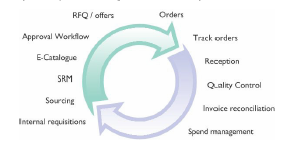
Laycock (2008) mentioned that advantages of the e-procurement such as- increase productivity, profit enlargement, cost reduction etc. is easily crafted by choosing right software. Automation of the e-procurement requires- Web-based cost reduction probabilities, managerial skill and acquisition streamlines, self-service environment, compliance and workflow, product selection options, order placement affiliation, appropriate vendor or the corporate trading agreement etc. Adoption and apposite of appropriate e-procurement software following are intrinsic worth that would realize by the Finnforest Corporation within a short time.
- Price reduction: easily 10 % price reduction of the goods and services could spend for materials.
- Precise requisition: business fulfilment can save (70 – 80) percentage through precise requisition or shorten requisition.
- Administrative cost reduction: administrative costs would be lower by 73 % than before. (Gabbard, 2008, pp. 1-4)
- Maverick: spending only half than before during buy of goods or other way cut-off-contract.
- Lower inventory costs: average inventory costs would be reduced by (25 – 50) %. Pires, & Stanton (2005, p. 8) stated that another important achievement of e-procurement is that as well as other cost of production, distribution and supplely it also reduced transaction costs by 5 – 20 euro per product where as in traditional procurement per order purchasing transaction cost was 50 – 250 euro.
Bulk purchasing power: Wilson (2005, p.11) said that purchasing power would be boosts by the reduction of administrative levels. For example, secure e-procurement strongly relates with adequate discount offers. On the other hand, time and money speak about costs also synchronized with administration and improvement of cash flows follow the improvement the customers’ purchasing power. He further added that alternative quote attainment is easier in the e-procurement that act an advocate for the existing supplier in the area of- issue of tenders and subsequently assemble the scope of greater competency and price reduction.
Supply Relationship Management (SRM): Laycock (2008) mentioned that compose a next of kin between the supplier and the buyer in the course of satisfactory data and shorter lead-time. There have a numerous way of edge with the suppliers and electronically interchange of data between the organisations can make such edge.
Enterprise Resource Planning (ERP): Today B2B marketplace is a phobia for the purchasers. An aggregate journey of ERP system and the accountancy system can offer incomparable packages in procurement functions, which relates with the financing activities though sometimes it is difficult to use. (Bowersox, D. et al, 2002, pp. 87-230)
Application Service Providers (ASPs): Excluding any software instalment, ASPs is proficient at high-level functions featured with high speed, essay function for both of small and large organisation. This module is just requires of three details Internet connection, companies existing network and web browsers. Furthermore, the ASP has operated secure remote server subsequently that support in the crisis of data losses by fire, elimination of natural catastrophe or by clerical error. Return after installation within few months toward the customer and the supplier are- Web-based deliver through customized function instantly and visibly as well as managerial costs reduction.
Business Week (2009, pp. 1-2) reported that larger organisations like- Finnforest Corporation, e-procurement would optimized through customized software like ASPs and get rod out the organisation from B2B system. Chronological e-procurement practices that enable the Finnforest to overcome recent dilemmas in showed in following figure. Moreover, all of the previously mentioned steps of recommendation make this organisation more flexible, specialists in accountancy, established internally customized, more accurately assess the requirement of the buyers through IT experience, and expertise in procurement as well as modification of the system, needs wherever asked for.
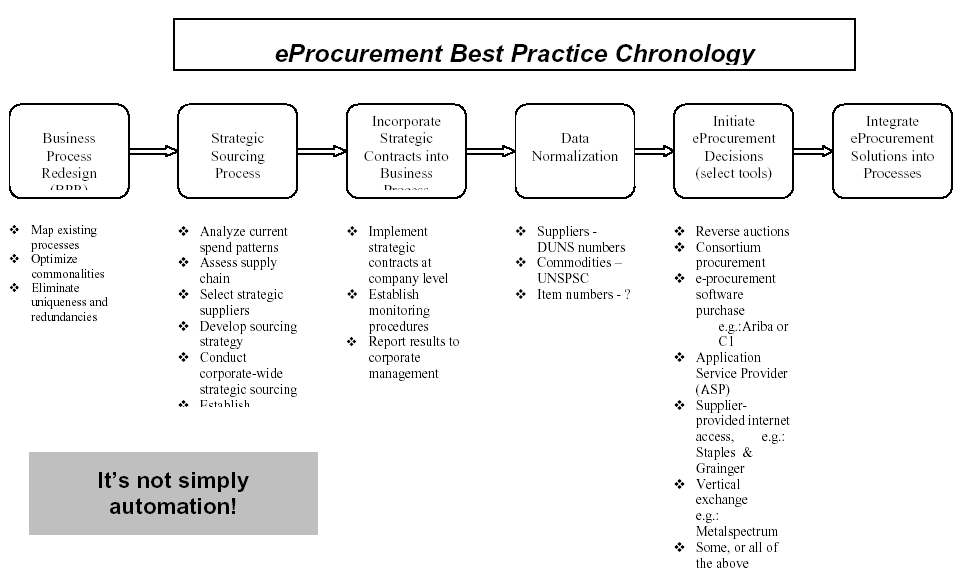
Conclusion
This dissertation would wrap up that the e-procurement implementation in modern business has been routed in three dimensions such as automation of indirect procurement, direct procurement by automation of e-supply chain management and e souring. It has carried out evaluations of e-procurement implementation at Finnforest Corporation based on multiple aspects including usage IT, spending system integration, process efficiencies of e-procurement, and cost effectiveness and the evaluations have resulted that the company enjoyed a tremendous revenue generation by best practice of e-procurement rather than traditional procurement. As the leader of European forest industry Finnforest Corporation has some excuse for traditional procurement procedures that given its status as an outsourcing enterprise with harvesting and its environmental awareness against deforesting. Thus Finnforest Corporation has enjoyed the advantage of traditional procurement simultaneously with e-procurement.
The e-procurement strategy to implement as part of opportunistic e-supply chain should be pedestal upon economic analysis, supplier-purchaser psychological approach, social & emotional impact of the Information technology in business, cost effectiveness and various supply-chain hypotheses. In this literature, the cost of such technology integration has been scrutinised in the feature of concerned contribution of the cost elements such as time involvement for IT personnel’s, uneven costs including overheads. As e-procurement covers all over the organisation around the globe, data from Finnforest Corporation may be useful for straight feedback on the achievement of e-procurement. The outcomes of this research would provide suitable resource allocation to reduce cost of traditional procurement and progress the competence of e-procurement in future business.
Reference List
- Aberdeen Group, 2004, The E-procurement Benchmark Report, pp. 6-19.
- Aberdeen Group, 2005, Best Practices in E-Procurement: Reducing Costs and Increasing Value through Online Buying, pp. 21-35.
- Baily, P. J. H. 2008, Procurement principles and management. Harlow, England: Prentice Hall Financial Times, pp. 112-235
- Bestpricecomputers 2009, E-Procurement Solutions, pp. 2-3 Web.
- Bowersox, D. Closs, D., and Cooper, M. B., 2002, Supply Chain Logistics Management, 1st ed., McGraw-Hill/Irwin: London, ISBN-10: 0072351004, pp. 87-230
- Brandon–Jones, A., & Raaij, E. V., 2005, Towards an Improved E-Procurement Quality (EPQ) Measurement Scale, pp. 1-17.
- Broggi, D., 2007, The Role of Knowledge Management in E-Procurement: Consip’s Experience, pp. 2-8.
- Burney, S. M. A., 2008. Inductive & Deductive Research Approach, pp. 6- 22.
- Business Week, 2009, Finnforest Company Profile, pp. 1-2.
- Carr, A., & Ross, A., 2003, The Role of Buyer’s Power in Managing Relationships with Key Suppliers: The Buyer’s Perspective, pp. 1-16.
- CBS Interactive Inc, 2009, E-procurement and mysap, pp. 1-3.
- Chapman, P, Thayil, V. & Harrison, A, 2001, Supply Chain Redesign at Finnforest Corp., Case -38, Case Data 2001, Pearson Education, Harlow, pp. 78-267.
- Christianson, K. et al., 2001, Thematic Roles Assigned Along The Garden Path Linger, Cognitive Psychology, 42, Department of Psychology, Michigan State University, pp. 17-29.
- Chopra, S., Meindl, P., 2008, Supply Chain Management, 3rd Edition, Pearson Prentice Hall, India, ISBN: 81-317-0401-7, pp. 48-90 & pp. 178-211.
- Cohen, L. Manion, L. Morrison, K., 2007, Research Methods in Education, 6th edition, London: Routledge, ISBN: 978-0-415-36878-0, pp 19- 70
- Cohen, S., and Roussel, J, 2005, Strategic Supply Chain Management, 2nd ed., McGraw-Hill: London, ISBN-10: 0071432175, pp. 291-326.
- Computerweekly.com, 2000, E-procurement: on the horns of a dilemma: e-commerce & e-business, pp. 1-3.
- Cresswell, A., Burke, B., & Pardo, T., 2006, Advancing Return on Investment Analysis for Government IT: A Public Value Framework, pp. 7-50, Web.
- Dai, Q., & Kauffman, R. J., 2000, To Be or Not to B2B: An Evaluative Model for E-Procurement Channel Adoption, pp. 3-25.
- DiFrancesco, D. T., Kenny, M. J., & Cancro, A. C., 2001, E-Government for Government, pp. 1-4.
- Dominick, C., 2008, Procurement Technology Success Secrets: What Are Procurement Technology Best Practices? pp. 1-2, Web.
- ec.europa 2001, Case No COMP/M.2473 – Finnforest / Moelven Industrier: Regulation (EEC) No 4064/89 Merger Procedure, pp. 2-9, Web.
- Ehandel 2009, Infrastructure for e-Procurement, pp. 2-7.
- EPIQ, 2008, Epiq Solution: Platform: Technology, pp. 1-3, Web.
- EPIQ, 2008, Articles: eProcurement: E-Procurement, pp. 1-2, Web.
- Finnforest, 2009, News: More out of Wood, pp. 5-38, Web.
- Finnforest Corporation, 2005, Interim Report of the Finnforest Corporation, pp. 3-9.
- Finnforest Kerto, 2002, Stronger support for wooden structures, pp. 8-14.
- Finnforest Merk, 2008, Excellence in Timber Construction, pp. 17-42.
- Fylnn, M., 2000, E-Procurement Technology Trends Changing Business, pp. 1-22.
- Gabbard, E., 2008, Strategic Sourcing and e-Procurement – Which One, or Both? pp. 1-4.
- Ghauri, P. & Gronhaug, K., 2005, Research Methods in Business Studies, 3rd edition, Prentice Hall: England, pp. 98-165.
- Ghiya, K. & Powers, M., 2005, e-Procurement–Strengthening the Indirect Supply Chain Through Technology Globalization, Finnforest Corporation Technology Journal, Volume 09, Issue 03, ISSN 1535-864X, pp. 2-8.
- Goldberg, H., 2008, E-Procurement: Not Your Ordinary Online Shopping Experience, pp. 1-3.
- Guertiz, A., 2001, Understanding the benefits of e- Procurement, pp. 5-18.
- Harder, A. & Humphrey, S., 2007, Overview of e-Procurement v8.9: Board of Regents/ Sky Bridge Global, pp. 3-33.
- Hill, J. E. and Kerber, A., 1967. Models, Methods and Analytical Procedures in Educational Research, Detroit, MI: Wayne State University Press, pp. 41-74
- Holma, H. 2006, Supply Chain Management and Industry Cyclicality: a Study of the Finnish Sawmill Industry, Universitatis Ouluensis, Oeconomica, pp. 12- 278, Web.
- Hope-Ross, D., 2001, Reasons E-Procurement Projects Fail to Achieve Their ROI, pp. 3-8.
- Kerr, J., 2009, Technology Outlook: Getting By Without the Big Buys, Supply Chain Management Review, 1/1/2009, pp 1-3.
- Kokko, M. et al., 2006, Finland Naturally innovative, ISBN: 952-9876-67-X, pp. 3-9.
- Kvale, S., 1996 Interviews: An Introduction to Qualitative Research Interviewing, London: Sage, ISBN: 9780803958197, pp. 7- 19.
- Laycock, S., 2008, E-Procurement, pp. 3-7.
- Maier, R., 2009, A Procurement Transformation at Penn, Supply Chain Management Review, 2009, pp. 1-3.
- Marshall, C., & Rossman, G. B., 2006, Designing Qualitative Research, 4th edition, Thousand Oaks – CA: Sage, ISBN: 0205482635, pp. 198-208.
- Metsäliitto Group 2008, Metsäliitto Group Annual report 2008, pp. 4-42, Web.
- Mibenge, M. and Okoye, N. C., 2007, E-procurement, Internal Customer Service and External Customers – A Study of Effects and Interdependencies, Pp. 6-97.
- Miles, M., & Huberman, M., 1994, Qualitative Data Analysis, 2nd edition, Beverly Hills, CA: Sage, 0-8039-3435-1, pp. 81- 104.
- Moon, M. J., 2002, State Government E-Procurement in the Information Age: Issues, Practices, and Trends, pp. 2-8.
- Mukhtar, M., Jailani, N., Yahya, Y., & Abdullah, Z., 2009, A Framework for Analyzing e-Supply Chains, European Journal of Scientific Research, ISSN 1450-216X, Vol. 25, No. 4 (2009), pp. 3-13.
- Norton, D. P. et al 2001, Seeing the Forest and Trees: ABC and BSC at Finnforest UK, Balanced Scorecard Report, Harvard Business School Journal, March/April 2001, Volume 3, Number 2, pp. 3-17.
- Pay Stream Advisors, 2007, Electronic Procurement Management: Automation Options for Your Purchasing Processes, pp. 2-13.
- Pierson, J., 2002, Johnson Controls’ Journey to e-Procurement, Supply Chain Management Review, 1/1/2002, pp. 1-9.
- Pires, G. D., & Stanton, J., 2005, A Research Framework For The Electronic Procurement Adoption Process: Drawing From Australian Evidence, Journal of Global Business and Technology, 12 y, Volume 1, Number 2, pp. 1-9.
- Roekel, J. V. Willems, S. & Boselie, D. M. 2002, Agri-Supply Chain Management: To Stimulate Cross-Border Trade in Developing Countries and Emerging Economies, pp. 1-3.
- SAP, 2002, 100 Customer Success Stories: Solution for Success, pp. 52-55.
- SAP UK, 2008, Finnforest UK improves its forecasting with SAP Advanced Planner and Optimizer 3.0: Planning Makes Perfect, SAP INFO 102 · Forum, pp. 1-2.
- Saunders, M. Thornhill, A., & Lewis, P., 2003, Research Methods for Business Students, 4th edition, London: FT Prentice Hall. ISBN: 0273701487, pp. 4-17, 34-44 & pp. 154- 57.
- Schul, H., & Blanc, D., 2008, The Drivers of Procurement Excellence, Supply Chain Management Review.
- Semenov, A. V., 2007, Building Online Communities In Forestry: The Cases Of Timberia.Org And The Urban Ecology Collaborative, Master’s Thesis, Graduate School of the University of Massachusetts , pp. 10- 118.
- Siegle, D., 2009. The Assumptions of Qualitative Designs, pp. 1-2.
- Sloan, K., 2009, Nothing to Lose but Overhead, Unnecessary Costs and Errors, pp. 1- 2.
- Smeltzer, L. R., & Carter, J. R., 2001, How to build an e-Procurement Strategy, Supply Chain Management Review, pp. 2-7.
- Snabe, J. & Herzberg, N., 2003, SAP Industry Strategy Update, pp. 2-20.
- Stevenson, W. J., 2006, Operations Management, 9th Edition, McGraw- Hill Company, ISBN: 0073041912, pp. 67- 84.
- Tech Target, 2009, E-Procurement, pp. 13-118, Web.
- tutor2u 2009, GCSE Business Studies: Primary research, pp. 1-2.
- UMASS 2008, E-Procurement for End Users, pp. 9-245.
- Viswanadham, N., & Gaonkar, R., 2008, Understanding E-supply chain, pp. 4-12.
- web1 2009, Quantitative and Qualitative Research, pp. 1-12.
- Wilson, S., 2005, Session 45: Creating Business Value with e-Procurement and Electronic Collaboration, pp. 1- 14.
- Yin, R. K., 2003, Case Study Research: Design and Methods, 3rd edition, Beverly Hills, CA: Sage, ISBN: 0761925538, pp. 55-79.
- Zikmund, W. M., 2006, Business Research Methods, 7th edition, Orlando: Harcourt Publishers, ISBN: 0030184320, pp. 45- 278
Footnotes
- Enterprise Resource Planning
- Information Technology
- Do-it-yourself
- Return on Investment
- Baily, P. J. H. (2008). Procurement principles and management, Harlow, England: Prentice Hall -Financial Times, pp. 394
- John Kerr (2009), Supply Chain Management Review, Author Information: John Kerr is a special projects editor for Supply Chain Management Review, Technology Outlook: Getting by without the Big Buys
- Schul, H. and Blanc, D, (2008)
- John C. Pierson (2002)
- Andersen Consulting (2009)
- Harvard Business School Case Study #9-598-109, February 26, 1999.
- Appell (2002)
- Return on Investment
- Charles, D. (2008)
- Annual Report of Finnforest
- Adapted from Johnston et al (2003)
- Roekel, Williams, & Boselie, (2002)
- Lambert and Cooper 2000, Handfield and Nichols 1999
- supply chain management
- Holma, H. (2006)
- Metsäliitto Group (2008)